|
Alumni Publications
Alfaro-Sh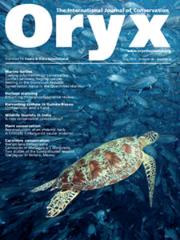 igueto, J., Mangel, J.C., Dutton, P.H., Seminoff, J.A., and Godley, B.J. (2012). Trading information for conservation: a novel use of radio broadcasting to reduce sea turtle bycatch. Oryx 46: 332-339 doi:10.1017/S0030605312000105 igueto, J., Mangel, J.C., Dutton, P.H., Seminoff, J.A., and Godley, B.J. (2012). Trading information for conservation: a novel use of radio broadcasting to reduce sea turtle bycatch. Oryx 46: 332-339 doi:10.1017/S0030605312000105
Bycatch of non-target animals in small-scale fisheries poses a major threat to seabirds and marine mammals and turtles. This is also a problem for small-scale fisheries in Peru because of the magnitude of these fisheries and the important marine biodiversity in Peruvian waters. Here we describe how we implemented a novel approach to mitigate bycatch impacts on marine turtles in Peru. We used high-frequency (HF) two-way radio communication to exchange information with fishers. We sought data that would afford insights into fishing patterns and levels of turtle bycatch so that we could identify areas of high-density bycatch in real time and warn other fishers. In return we provided oceanographic and atmospheric information useful for the fishers...
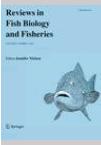 Castellanos-Galindo, G.A., Krumme, U., Rubio, E.A., Saint-Paul, U. (2012) Spatial variability of mangrove fish assemblage composition in the tropical eastern Pacific Ocean. Reviews in Fish Biology and Fisheries, doi: 10.1007/s11160-012-9276-4 Castellanos-Galindo, G.A., Krumme, U., Rubio, E.A., Saint-Paul, U. (2012) Spatial variability of mangrove fish assemblage composition in the tropical eastern Pacific Ocean. Reviews in Fish Biology and Fisheries, doi: 10.1007/s11160-012-9276-4
Mangroves in the tropical eastern Pacific (TEP) constitute a dominant coastal ecosystem that harbours diverse and economically important fish assemblages. We describe here regional scale patterns in the composition of this poorly documented mangrove ichthyofauna. A review of available studies (including own data) from five countries covering the entire region was performed. Species abundance distribution curves were constructed and compared among studies. Relative abundance data of fish species and families were analysed with classification and ordination techniques. Common species and families responsible for differences among localities were identified. Overall, 315 fish species associated to mangroves of the TEP were identified. Fifteen fish families accounted for 80 % or more of the relative abundance of all studies. Despite the use of different sampling techniques, common features arose for most of the mangrove fish assemblages...
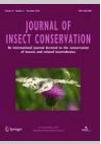 Chaladze, G. (2012). Climate-based model of spatial pattern of the species richness of ants in Georgia. Journal of Insect Conservation, doi:10.1007/s10841-012-9464-5 Chaladze, G. (2012). Climate-based model of spatial pattern of the species richness of ants in Georgia. Journal of Insect Conservation, doi:10.1007/s10841-012-9464-5
For optimal planning of conservation and monitoring measures, it is important to know the spatial patternof species richness and especially areas with high species richness. A spatial pattern of the species richness of ants in Georgia (Caucasus) was modeled, areas with the highest number of ant’s species were inferred, and climatic factors that influence the pattern of ant diversity were identified. Species richness was positively correlated with variables associated with temperature and negatively correlated with variables associated with precipitation. Species richness reaches a maximum at the elevations 800–1,200 m a.s.l. and declines at both lower and higher altitudes.
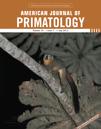 Fan, P.-F., Fei, H.-L., and Ma, C.-Y. (2012) Behavioral responses of Cao Vit gibbon (Nomascus nasutus) to variations in food abundance and temperature in Bangliang, Jingxi, China. American Journal of Primatology 74: 632-641. Fan, P.-F., Fei, H.-L., and Ma, C.-Y. (2012) Behavioral responses of Cao Vit gibbon (Nomascus nasutus) to variations in food abundance and temperature in Bangliang, Jingxi, China. American Journal of Primatology 74: 632-641.
We studied seasonal variation in the time budget and diet of two Cao Vit gibbon groups between January and December 2009 in Bangliang, China. Gibbons increased resting time and huddled together in sleeping places in response to cold weather. Gibbons were found to selectively consume over 81 plant species. They spent more time feeding on fruit when fruit was more abundant suggesting that fruit was their preferred food. During months of fruit scarcity, Cao Vit gibbons supplemented their diet with leaves, buds, and invertebrates. We conclude that flexibility in consuming diverse food types and food species, and in responding to the availability of preferred foods, has enabled the Cao Vit gibbon to survive in a degraded karst forest habitat.
 Minter, T., de Brabander, V., van der Ploeg, J., Persoon, G.A., and Sunderland, T. (2012) Whose consent? Hunter-gatherers and extractive industries in the Northeastern Philippines. Society & Natural Resources 0:1-17. Minter, T., de Brabander, V., van der Ploeg, J., Persoon, G.A., and Sunderland, T. (2012) Whose consent? Hunter-gatherers and extractive industries in the Northeastern Philippines. Society & Natural Resources 0:1-17.
There is increasing international recognition of indigenous peoples’ right to influence development activities in their territories. Free, Prior and Informed Consent is the strongest available instrument to assert this right, and this article provides a case study on its implementation in the northeastern Philippines. Under the Indigenous Peoples’ Rights Act of 1997, extractive companies must seek consent from indigenous communities if these inhabit the proposed concession areas. The National Commission on Indigenous Peoples, a government agency, facilitates this process. This article documents how extractive companies have obtained consent from the Agta, a resource-dependent indigenous group. The results, which cover the period 2003–2011, show that the implementation of Free, Prior and Informed Consent fails in terms of the process and its outcome. Consent is manipulated, the role of the National Commission on Indigenous Peoples as facilitator is problematic, and the agreements are culturally inappropriate, weakly operationalized, and poorly realized.
 Raza, H. A., Ahmad, S. A., Hassan, N. A., Ararat, K., Qadir, M., and Ali, L. (2012). First photographic record of the Persian leopard in Kurdistan, northern Iraq. IUCN/SSC Cat Specialist Group. CatNews, 56. Raza, H. A., Ahmad, S. A., Hassan, N. A., Ararat, K., Qadir, M., and Ali, L. (2012). First photographic record of the Persian leopard in Kurdistan, northern Iraq. IUCN/SSC Cat Specialist Group. CatNews, 56.
Hatt (1959) reported two leopard skins in the Kurdistan Mountains; one recorded by Pocock (1930) from Rawanduz, and the other by Field (1955) from Mt. Bradost. These are very old sources and no information on the leopard presence was documented since then. Biodiversity studies undertaken in Iraq for six years have only had confirmation of the species presence through animals that were killed. One leopard was killed by landmine in Darbandikhan Lake in 2009. A second was killed in Diyala in 2008. No sightings have been made in Iraq until the Nature Iraq camera trap photographed a leopard in 2011.
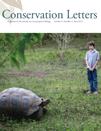 Smith, R. J., Veríssimo, D., Isaac, N. J.B. and Jones, K. E. (2012), Identifying Cinderella species: uncovering mammals with conservation flagship appeal. Conservation Letters 5(3): 205-212. Smith, R. J., Veríssimo, D., Isaac, N. J.B. and Jones, K. E. (2012), Identifying Cinderella species: uncovering mammals with conservation flagship appeal. Conservation Letters 5(3): 205-212.
International conservation NGOs rely on flagship species campaigns for fundraising but this approach has been criticized for benefiting a limited number of species. However, this criticism assumes these campaigns do not fundraise for broader issues and that alternative species with similar appeal to the target audience exist. We investigated this by: (1) recording the use of threatened mammal species in international NGO flagship campaigns, and; (2) using these data to identify “Cinderella species,” which we define as aesthetically appealing but currently overlooked species. We found these NGOs only used 80 flagship species and that 61% of their campaigns only raised funds for the species itself. We also found these existing flagships are generally large and have forward-facing eyes and that there are 183 other threatened species with similar traits. Thus, the current approach is overly limited but NGOs could overcome this by adopting some of these Cinderella species as new flagships.
|